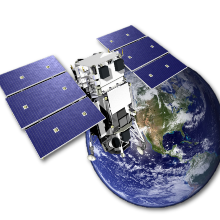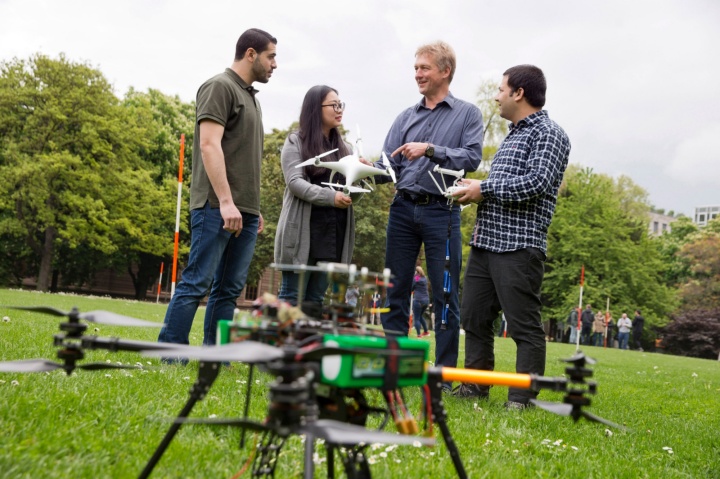Geomatics for Environmental Monitoring (GEM) is a critical discipline focused on the acquisition, analysis, and management of geospatial data to monitor and address environmental changes. With advancements in satellite technology, remote sensing, and geographic information systems (GIS), the field plays an essential role in tackling global environmental challenges such as climate change, resource management, and urbanization. The GEM program equips students with the tools and knowledge to develop sustainable solutions for environmental monitoring, aligning with the growing need for precise geospatial information in safeguarding natural ecosystems and promoting responsible resource use.
Bachelor of Science degree (or equivalent) in fields such as Geomatics, Environmental Science, Geodesy, Photogrammetry, or Surveying Engineering. Graduates from programs similar focus of study may be admitted following an individual assessment.
A strong foundation in mathematics is necessary, along with proficiency in programming languages like MATLAB, Python, etc.
The GEM program emphasizes advanced techniques in capturing, processing, and analyzing geospatial data to monitor environmental changes. Key areas of specialization include:
- Climate and Environmental Research
- Satellite Geodesy and Remote Sensing
- Sustainable Development
- Hydrogeodesy
- Navigation and autonomous driving
- The construction and monitoring of constructions
The GEM program offers diverse and exciting career opportunities in both the public and private sectors. Graduates can work in fields such as Geospatial Engineering and Surveying, climate and environmental research, automotive Industry, robotics and autonomous system, and software development. Career prospects also extend to urban planning, sustainable development, construction industry, and higher technical administrative roles in government. Additionally, the program opens pathways to advanced research and academic opportunities, including doctoral studies, enabling graduates to make significant contributions to environmental monitoring and geomatics.
Studying abroad: what opportunities does my study program offer?
The GEM program provides unique opportunities for international collaboration and exposure, preparing students to address global environmental challenges. Many students come from diverse international backgrounds, fostering a multicultural learning environment. The University of Stuttgart partners with various global institutions, allowing students to participate in exchange programs, joint research projects, or internships abroad. These opportunities enhance practical skills and help students build a network of global professionals in environmental monitoring and geomatics.
Studying abroad: what opportunities does the University of Stuttgart have to offer?
Are you interested in going on exchange for a semester or two? Or would you rather do some research or attend a language course? Have you ever thought of joining a Summer School or planned an internship abroad? Whatever you have in mind for your exchange, the International Office will help you make your stay abroad an unforgettable experience. The first step will be to sign up online for our information sessions at the International Office that are offered on a regular basis. We look forward to your registration!
- Studying abroad
information sessions, partner universities, language requirements, application deadlines, scholarships
Application and admission: how do I get a place at the University?
Admission Requirements
The following requirements apply if you wish to be admitted to Geomatics for Environmental Monitoring M.Sc.:
- A Bachelor's degree of at least six semesters in duration (or equivalent) in Geodesy and Geoinformatics Engineering or in a closely related field of study
- Knowledge and skills equivalent to those required to complete a bachelor's degree in Geodesy and Geoinformatics Engineering
For detailed information about the admission process, required English proficiency, and criteria for determining eligibility, please refer to the admission regulations.
Language Requirements
You need a proof of fundamental knowledge of the English language (i.e. TOEFL test, min. 80 points (internet-based) or any other proof equivalent to it.
Application period for the The winter semester starts in October. The summer semester starts in April.
winter semester:
November 15 – January 15
summer semester:
May 15 – July 15
How is the program structured?
- Program structure Geomatics for Environmental Monitoring (GEM)
This file is not digitally accessible. If you have difficulty reading it, please contact Mr. Metzner.
The Module Guide describes the modules and the required courses belonging to the module.
It will probably be published in October 2025.
- The Module Guide (also called module handbook) is published in the Campus Management System C@MPUS (please click as follows: choose the degree - click on the book behind the study program's name).
Important Websites
Which institutes are involved in this study program?
Accreditation

Contact

Martin Metzner
Dr.-Ing.Deputy Director / Head of Section Geo-Mobility and BIM

Nico Sneeuw
Prof. Dr.-Ing.Vice Dean




